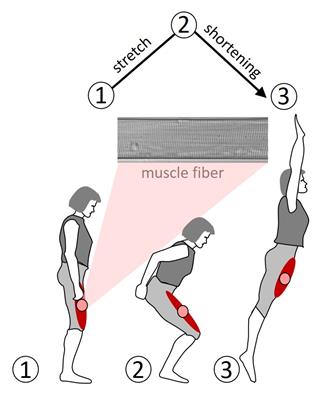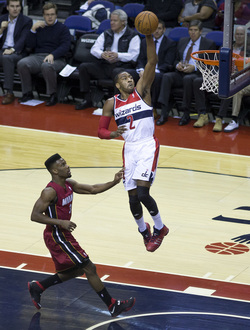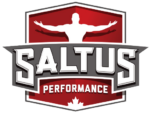BY MASON TAN – BKIN, FMS
INTRODUCTION
In Eccentric Overload Part 1 – Sport performance, we identified the benefits of eccentric overload in terms of sport performance. For this second part, we will be identifying the other benefits of eccentric overloading, mainly in injury prevention.
To begin, let’s first look at how a muscle operates during everyday activity. During a decent of inclines or when decelerating a particular body segment (eg. slowing down the upper limb after tossing a ball), our muscles tend to function as shock absorbers (LaStayo et al., 2003).
When a muscle works as shock absorbers or in other words, eccentrically (lengthening), the amount of “work”done is to be considered negative. In contrast, positive“work” is considered when the muscles are shortening. Collectively, our body does near equal amounts of positive and negative “work” during everyday locomotion (LaStayo et al., 2003). If negative “work” exceeds positive “work” the stress caused on the muscle-tendon system could cause injury to the muscle, myotendinous unit (muscle-tendon unit), the tendon itself, and the osteotendinous insertion (LaStayo et al., 2003).

Due to the elastic energy being stored while the muscle and tendon gets stretched, LaStayo et al. (2003) also noted that our muscles can act as springs when they get activated eccentrically immediately prior to shortening. This can also be referred to as the Stretch Shortening Cycle (SSC), where muscles are actively lengthening prior to a subsequent shortening phase (LaStayo et al., 2003). If you have ever seen an athlete jump out of the building like they got pogo sticks as lower limbs, you have witnessed the SSC in full effect.

Imagine if John Wall of the Washington Wizards did not have shock absorbers to aid in his deceleration on a fast break.
It is important to remember that sports injuries or injuries in general are never 100% preventable. Our goal as Strength and Conditioning coaches is simply to reduce the chances of an injury. Through effective strengthening as outlined in part 1 of this article series, we are able to work towards that goal.
COMMON INJURIES IN VOLLEYBALL AND BASKETBALL
Regardless of what activity an individual chooses to participate in, the likelihood of an injury is always above zero. For example, volleyball which is a non-contact sport has the greatest risk of acute ankle injuries, and overuse conditions of both the knee and shoulder (Reeser et al., 2006). A common injury in sports that require a lot of jumping is often referred to as Patellar Tendinopathy or Jumper’s knee. The symptoms are usually pain just under the knee cap and become quite sensitive to palpation if left untreated.
Additionally, non-contact ACL (Anterior Cruciate Ligament) injuries are also quite common due to anatomical risk factors, environmental risk factors, shoe-surface, etc. (Griffin et al., 2000). In an unpublished data collection by Teitz, 1999, 54 videotapes of ACL injuries in basketball and soccer players were analyzed. Results from the analysis showed “100% of male basketball players were injured landing from a jump, whereas roughly half the women were injured landing from a jump, and half were injured when they stopped suddenly while running down the court”.
INJURY PREVENTION – ECCENTRIC OVERLOAD
Here are a few injuries and prevention strategies that studies have suggested:
Hamstrings – Horst et al. (2015) suggested the incorporation of the Nordic Hamstring Exercise protocol in regular amateur training to significantly reduce hamstring injury incidence.
Patella Tendinopathy (Jumper’s Knee) – Reeser et al. (2006), suggested the use of eccentric training protocols during the off-season as an effective way to rehabilitate Jumper’s knee. Additionally, Bahr et al. (2006), concluded in their study that eccentric training is a low-risk and low-cost option as compared to surgical procedures to treat this particular condition.
Non-contact ACL – Griffin et al. (2000), suggested 4 prevention strategies for prevention of ACL injuries. Note: non-contact ACL or ACL injuries are usually caused by biomechanical factors (knees collapsing while jumping etc.) which can be fixed through proper assessment and strength training
– Specific training programs that enhance body control reduce the likelihood of ACL injuries in female athletes while potentially increasing athletic performance.
– Training and conditioning programs for male and female athletes in the same sport may need to be varied.
– Coaches and therapists involved with athletes should identify sport-specific at-risk motions and encourage athletes to avoid these situations when possible
– Identify strategies for activating protective neuromuscular responses when at-risk situations are encountered.
Achilles Tendinopathy – Kingma et al. (2007) conducted a systematic review on eccentric overload training in patients with chronic Achilles tendinopathy. They concluded that eccentric overloading showed beneficial effects on pain and function. Subjects with chronic Achilles tendinopathy showed a decrease in pain intensity after performing eccentric overload training.
Thus far, we know that injuries tend to occur when the amount of negative “work” exceeds the amount of positive “work”. For instance, Hamstring muscle strains are common in sports that require explosive movements like track and field, soccer, football, etc. Because our body is built to adapt to various stressors, we are able to imply an eccentric overload to our muscular system to build strength leading to an increased overall negative “work” threshold, and ultimately reducing the likelihood of an injury occurring. We can also use eccentric overload as a means of rehabilitation as suggested by several studies for jumper’s knee and/or Achilles tendinopathy.
For more information about how to further reduce the likelihood of sports injuries check out our sports injury prevention article.
REFERENCES:
LaStayo, C. P., Woolf, M. J., Lewek, D. M., Snyder-Mackler, L., Reich, T. Lindstedt, L. S. (2003). Eccentric muscle contractions: their contribution to injury, prevention, rehabilitation, and sport. Journal of Orthopaedic & Sports Physical Therapy, 33(10), 557-571. DOI: 10.2519/jospt.2003.33.10.557
Horst, N., Smits, D-W., Petersen, J., Goedhart, A. E., Backx, J.G. F. (2015). The preventative effect of the nordic hamstring exercise on hamstring injuries in amateur soccer players. The American Journal of Sports Medicine, 43(6), 1316-1323. DOI: 10.1177/0363546515574057
Reeser, C. J., Verhagen, E., Briner, W. W., Askeland, T. I., Bahr, R. (2006). Strategies for the prevention of volleyball related injuries. British Journal of Sports Medicine, 40, 594-600. DOI: 10.1136/bjsm.2005.018234
Griffin Y. L. et al. (2008). Noncontact anterior cruciate ligament injuries: risk factors and prevention strategies. Journal of the American Academy of Orthopaedic Surgeons, 8(3), 141-150.
Bahr, R., Fossan, B., Loken, S., Engebresten, L. (2006). Surgical treatment compared with eccentric training or patellar tendinopathy (jumper’s knee). The Journal of Bone and Joint Surgery, 88(8), 1689-1697. DOI: 10.2106/JBJS.E.01181
Kingma J. J., Knikker, D. R., Wittink, H. M., Takken, T. (2007). Eccentric overload training in patients with chronic achilles tendinopathy: a systematic review. British Journal of Sports Medicine, 41(3). doi: 10.1136/bjsm.2006.030916
